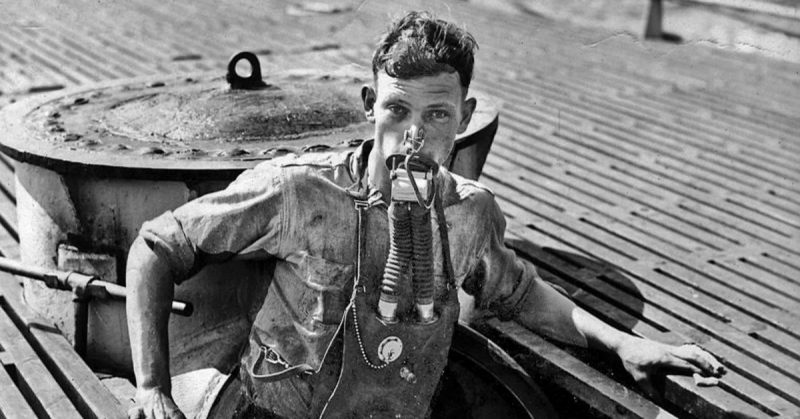In the early 20th century, when a submarine sank, there was little hope to rescue any crew trapped aboard. This was underlined when in December 1927 the submarine S-4 sank with all hands. Although the submariners were still alive, the U.S. Navy was unable to rescue them, and they died from lack of oxygen.
The disaster made national headlines, and the public demanded action. But it was Charles “Swede” Bowers Momsen (1896-1967) who made a difference.
The trick was that as a sailor swam upward, they needed to breathe out the expanding air lest it rupture their lungs and fill their body with bubbles.
He was nicknamed “Swede” for his Scandanavian heritage, though truth be told he was a Danish American. He graduated from Annapolis in 1919 and commanded submarines early in his career. It was as a commander in 1925 that he was involved in the failed rescue attempt of S-51 which sank with all hands near Block Island.
After the S-4 disaster, Momsen was one of the people who responded to suggestions from the public to improve submarine safety.
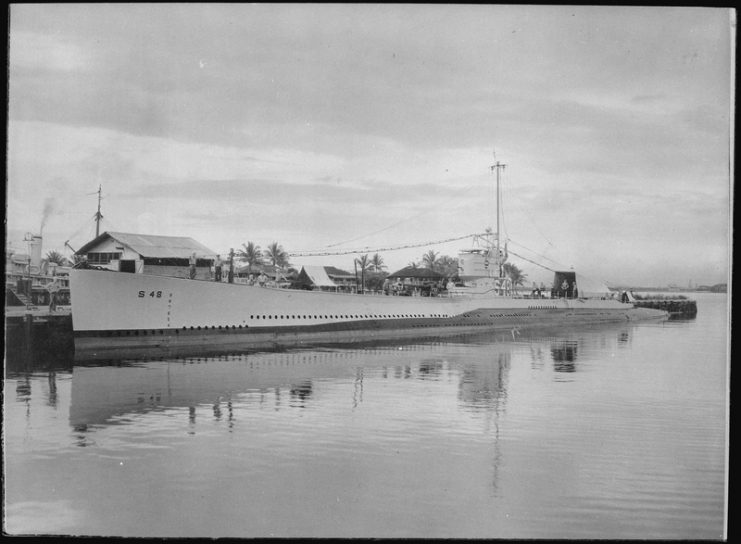
Momsen was committed to developing equipment that would allow submariners to escape from sunken submarines. He followed two tracks. First there was a modified diving bell that would eventually evolve into the McCann Submarine Rescue Chamber – something he primarily invented, despite its name.
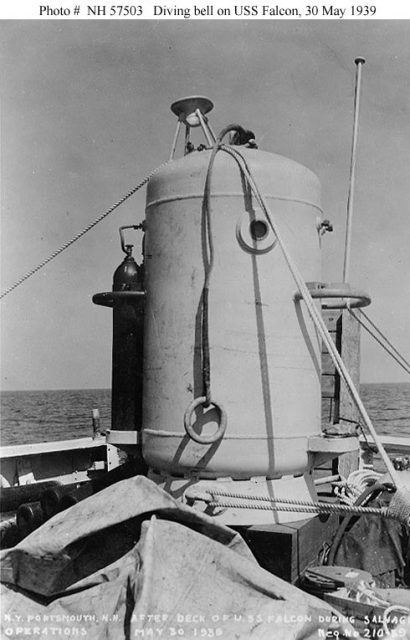
The second was the invention of the Momsen Lung, which he manufactured with the help of both a civilian engineer named Frank Hobson from the Bureau of Construction and Repair and the head of the diving school at the Washington Navy Yard, Chief Gunner Clarence Tibbals.
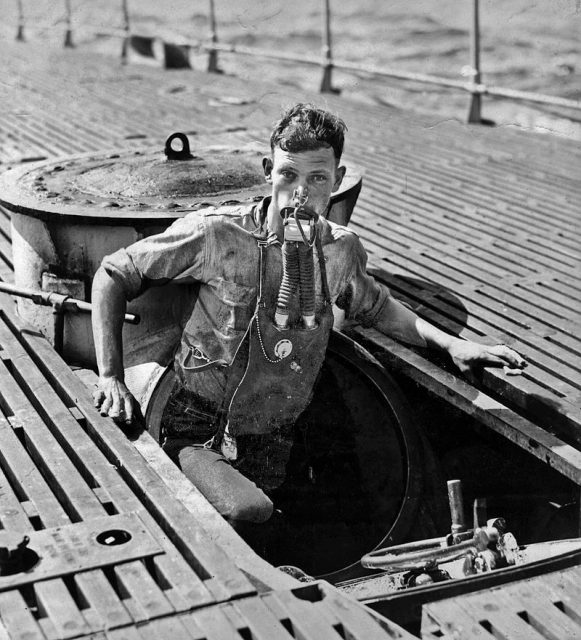
The Lung was a rebreather that allowed a person to ascend slowly to the surface. A sailor strapped the thing to his face and inhaled through one valve which led to a bag fed by an oxygen canister. Then the sailor would breathe out into a second valve and bag that used soda lime to scrub carbon dioxide.
The sailor wore a nose clip so the excess air was expelled through a valve on the bottom side of the exhalation bag. At the surface, the expanded oxygen allowed the Lung to be used as a life jacket.
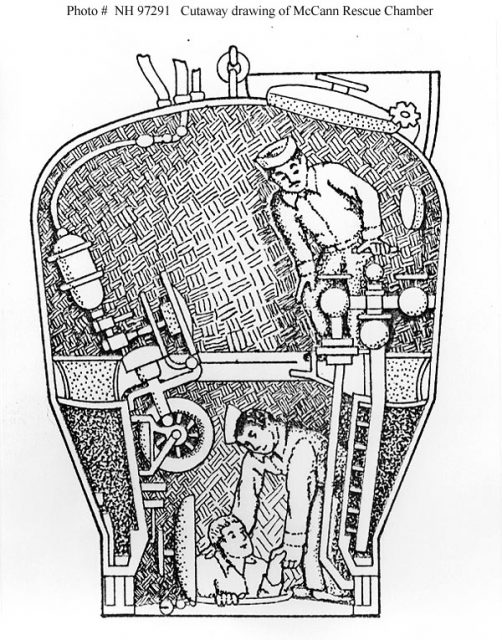
Momsen envisioned that a man trapped inside a submarine could escape through a special escape trunk which could be flooded with sea water after the survivors entered it, and then let them to open it to the sea. Then, following a rescue buoy cable which they deployed, survivors could escape, breathing in and out the whole way. Momsen estimated that his Lung would be effective up to 300 feet deep.
https://www.youtube.com/watch?v=ACx2BxKyGA8
Training was critical. If a sailor used the device at depth, the gases in the Momsen Lung would expand as they ascended. The trick was that as a sailor swam upward, they needed to breathe out the expanding air lest it rupture their lungs and fill their body with bubbles.
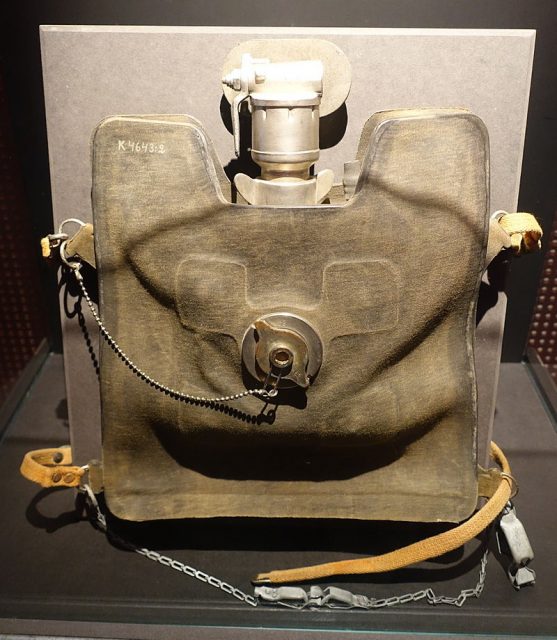
In addition, sailors needed to stop while ascending at predetermined marks on the rescue cable for several moments to prevent the bends, or decompression sickness. In training, two sailors died because they held their breath while ascending.
The Lung was originally not sanctioned by the Navy. So Momsen tested it himself first with Tibbals during off-hours, using a testing tank and then later in the Potomac River. It was after his testing in the Potomac that the press got word of it, and the U.S. Navy reluctantly adopted the Lung.
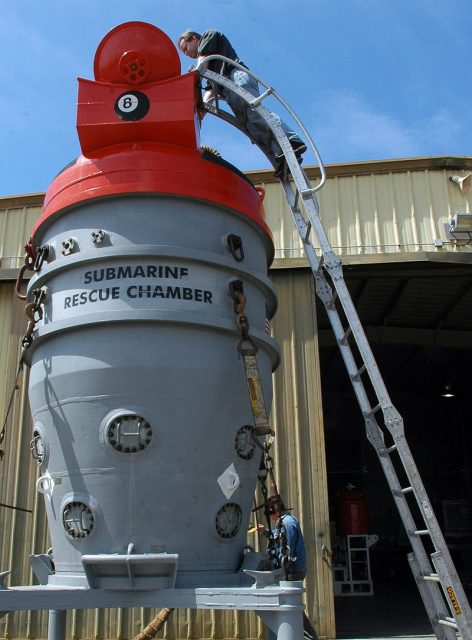
Further official testing was done, with the most dramatic instances performed by Momsen and a torpedoman named Edward Kalinoski on S-4 which had been raised and converted into a safety test submarine.
They purposefully flooded the submarine and made successful escapes at 40 feet and 207 feet. The Lung was installed on submarines along with escape trunks, and Momsen received a Distinguished Service Medal in 1929.
The Momsen Lung was only used in real emergencies on two occasions, with the first time not as intended. When Squalus sank in 243 feet near the Isle of Shoals on May 23, 1939, the trapped crew used the Momsen Lungs as primitive gas masks so they could pass through the forward battery compartment which was inundated with chlorine gas.
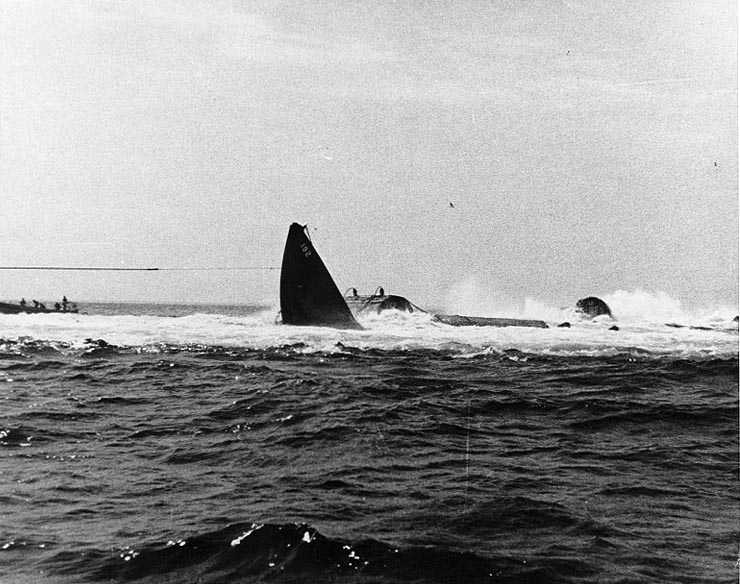
Momsen, who was at the scene, did manage to rescue all the survivors using the McCann Rescue Chamber.
The second time was on October 25, 1944. The submarine Tang with Dick O’Kane in command had a marvelous career during World War II having sunk 33 ships. But on its last mission a malfunctioning torpedo made a circular run and slammed into the submarine. The boat sank to 180 feet.
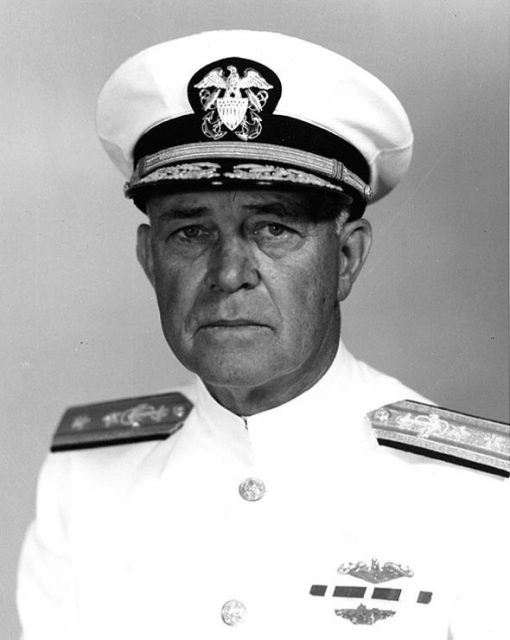
Of the crew trapped within Tang, eight managed to escape using their rebreathers. The officers and crew of Tang were then taken prisoner by the Japanese. But that is another story.
Read another story from us: “Turtle” of 1776 – The First ‘Submarine’ Ever Used In War
In 1962, the Momsen Lung was replaced by the Steinke hood which in turn was replaced by the full body suit and life raft in the Submarine Escape and Immersion Equipment used today. All these developments are a credit to Swede Momsen, and his drive for submarine safety and his devotion to those in the silent service.
